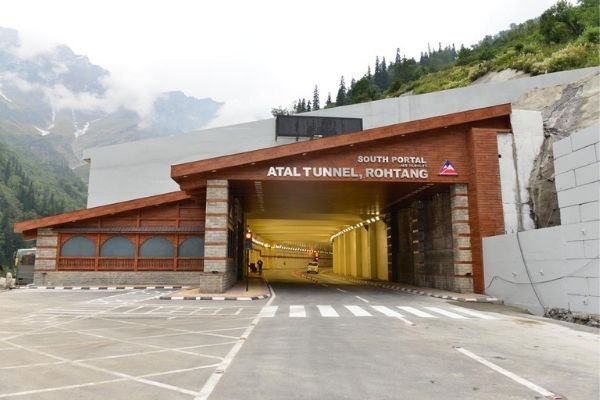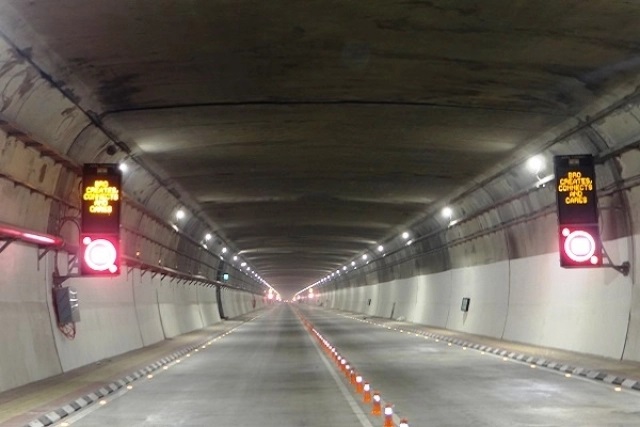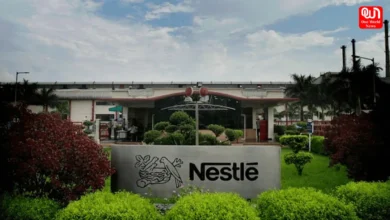
The new Atal Tunnel won’t just help the armed forces but also the residents
Prime Minister Narendra Modi inaugurated the extremely important Atal Tunnel in Rohtang on Saturday. The Rohtang tunnel is named after former Prime Minister of India, Atal Bihari Vajpayee. The historic decision to construct this strategic tunnel was taken on June 3, 2000, by the Atal government. The Modi government decided to name the tunnel on Vajpayee’s name in 2019 to honour the contribution of the former PM. The construction of the engineering marvel was slated to complete in May 2020, but the project got delayed by few months.
Importance of Atal Tunnel
The Atal tunnel is the first step for India towards all year connectivity to Ladakh. The tunnel holds strategic importance as it will provide the year-long connectivity for armed forces in border areas. The all-weather tunnel will benefit lakhs of residents of Ladakh as it would help them to remain connected with the rest of the country entire year. It will also shorten the distance for tourists who want to travel from Manali to Lahul and Spiti districts by several kilometres.
The 9.2 km long tunnel has huge strategic importance. Once, the Nimmu-Padum-Darch road is ready to use, both will facilitate the faster mobilization of supplies and troops to the country’s borders. It is expected to save an entire day for the military when they move to forward posts.
Residents of Ladakh who faced immense hardships when it came to availing basic facilities like food supplies and hospitals, will now be able to reach Manali and connect with the country using the Atal Tunnel. The drop in travel time will help many, especially the farmers whose potatoes and peas won’t rot in trucks while being transferred to Kullu Mandi. Essential items like vegetables, fruits and petrol supplies would also be available throughout the year.
Residents of Ladakh and Lahaul Valley believe that livelihoods in the tourism sector could find a boost. Visitors from Manali can now come for a day trip which was impossible to conceive earlier.

Read more: Swachh Bharat Abhiyan completes 6 years, here is what the campaign has achieved so far
Important facts about Atal Tunnel
The feasibility study for the tunnel was done in 1990. The foundation stone for the access road to south portal of tunnel was laid on 6th May 2002. The tunnel has been constructed using drill and blast NATM (New Austria Tunneling Method) techniques. The first blast took off in 2010 and the last blast took place in 2017.
The Atal Tunnel, which is built with ultra-modern specifications in Himalaya’s Pir Panjal range at an altitude of more than 3000 meters from the Mean Sea Level, connects Manali to Lahaul-Spiti valley. The road distance between Leh and Manali has now decreased 46 kilometers of 4 to 5 hours. The North Portal of the tunnel is located near Teling, Sissu, Lahaul Valley at an altitude of 3,071 m and the South Portal is located at an altitude of 3,060 m, 25 kilometers away from Manali.
It is a horseshoe-shaped single tube double lane tunnel with a roadway of 8 meters. The tunnel has been designed for traffic density of 3000 cars and 1500 trucks every day with a maximum speed of 80 km/hr.
There are ample safety features. Telephone connections are built at every 150 meters for emergency communication. Auto incident detection systems with CCTV cameras at every 250 meters, fire hydrant mechanisms at every 60 meters, evacuation lighting/exit signs, broadcasting system and air quality monitoring at every 1 kilometer.
Have a news story, an interesting write-up or simply a suggestion? Write to us at info@oneworldnews.com








